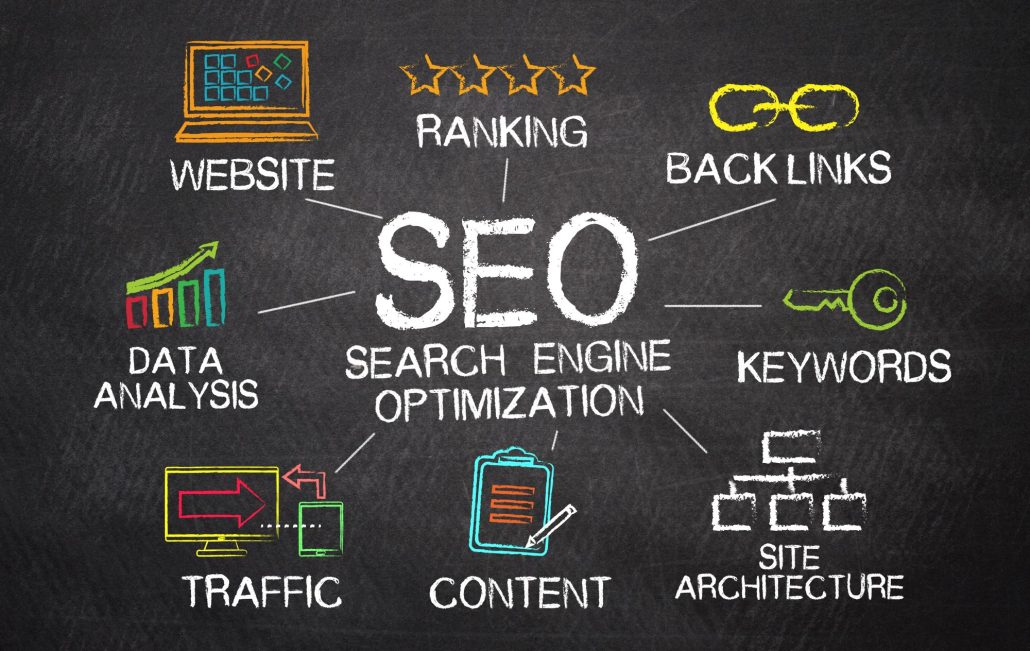Seven Marketing Trends That Guarantee Business Success

The conventional marketing playbook is getting a revamp in 2023, but is your business ready to pivot and secure its spot in this dynamic market landscape? Discover the top marketing trends shaping the future of today’s companies.
1. SEO: The Key to Conquer Search Traffic
Search Engine Optimization (SEO) remains the key player for website traffic in digital marketing. It’s the catalyst that amplifies a site’s visibility on search engine results, luring potential customers to your doorstep.
But as Google’s algorithms continue to advance, SEO trends must keep up, making it crucial for businesses to stay up-to-date with the latest SEO practices.
Here are some pointers to up your SEO game:
- Keyword Insights: Zero in on relevant keywords your prospective customers might utilize.
- Content Quality: Original, high-value content gets a thumbs-up from search engine algorithms.
- Site Speed: A speedier website enhances user satisfaction and ranks higher on search engines.
While mastering SEO might appear complex, your brand can stand toe-to-toe with the competition. With the expertise of P Singh and his extensive knowledge of SEO, you can establish a strong online presence and build stronger connections with your audience.
2. Micro-Influencers: Brands’ Secret Sauce for Authentic Reach
In a world where authenticity is prized, brands are striking gold by utilizing micro-influencers, digital personalities with a modest but actively engaged follower base. Why are businesses gravitating toward micro-influencers?
- Strong User Engagement: Micro-influencers often have a higher engagement rate due to their niche followers. Their content tends to resonate more with their audience, leading to impactful interactions.
- Credibility: Micro-influencers share more personal experiences, making them seem more reliable, and therefore, their product endorsements gain trust.
- Cost-Effectiveness: Collaborating with micro-influencers is often budget-friendly, offering considerable returns for small to medium-sized enterprises with limited marketing resources.
3. Mobile Optimization: No Longer a Choice but a Necessity
With the explosive growth of smartphones and ever-increasing screen time, mobile optimization has graduated from being a nice-to-have to a must-have marketing strategy. Businesses that do not deliver a seamless mobile experience stand to lose prospective customers.
What exactly does mobile optimization encompass?
- Responsive Design: Websites should adapt to the user’s device in terms of screen size, platform, and orientation. This involves optimizing layout, images, and navigation for a more fluid mobile experience.
- Speed Matters: Slow-loading mobile pages could result in higher bounce rates. Compressing images, trimming code, and browser caching can considerably boost mobile page speed.
- Mobile-First Content: Content should be crafted with a mobile-first approach. This implies prioritizing information significant to mobile users and using easily digestible formats on smaller screens.
4. Blogging: The Evergreen Marketing Tool
Even with new marketing techniques, blogging remains a formidable tool in digital marketing. Businesses regularly update their blog enjoy several benefits, from SEO improvement to deeper customer relationship building.
A Forbes article cites that effective blogging can help companies exhibit proficiency, personalize their brand, and drive traffic. So, how does blogging boost digital marketing success?
- SEO Boost: Blogs updated regularly with relevant keywords can improve a business’s SEO, driving organic traffic.
- Industry Authority: Well-researched, informative blogs help businesses position themselves as industry leaders, instilling trust among potential customers.
- Customer Engagement: Blogs allow businesses to connect more deeply with their audience, addressing their concerns and offering valuable tips. A well-curated blog can convert casual visitors into loyal customers.
5. Direct Messaging: The Customer Service Powerhouse
The current age of instant gratification emphasizes the need for quick and effective customer service. Direct messaging has become a potent tool in customer service, enabling businesses to handle customer inquiries swiftly and personally.
This approach enhances customer satisfaction and strengthens customer relationships.
Here’s how you can leverage direct messaging:
- Quick Turnaround: Faster response to customer queries improves customer satisfaction. Automation tools can be used to respond instantly to common questions.
- Personalization: Direct messages allow businesses to personalize their interactions, making customers feel special.
- Problem Resolution: Direct messaging can swiftly address customer issues, reinforcing their trust in your brand.
6. Social Commerce: A New Era in Digital Marketing
Social media platforms have transcended their primary purpose of connecting people, venturing into commerce. Social commerce, characterized by purchasing products directly through social media interfaces, has emerged as a new dawn in the marketing ecosystem.
This revolutionary trend turns passive scrolling into an active shopping experience, reshaping how businesses engage with their target audience. If you’re considering harnessing the power of social commerce, here are a few essential tips:
- Product Tags: Incorporate product tags on your social media posts to guide customers toward your online store.
- Leverage User Content: Utilize content your consumers generate, such as reviews and photos, to enhance product credibility.
- Special Offers: Encourage purchases by offering exclusive deals to your social media followers, bolstering customer loyalty.
7. Native Ads: An Imperative in Today’s Digital Marketing
In the overcrowded digital advertising landscape, native ads have carved out their unique space. These ads integrate seamlessly with the host platform’s content, offering users a less intrusive and more engaging advertising experience.
As more consumers turn away from disruptive ads, native ads have become increasingly significant in modern marketing. For a successful native advertising campaign, consider these strategies:
- Contextual Relevancy: Align your ad content with the platform’s context and user interests.
- Engaging Content: Craft high-quality content to foster better user engagement.
- Clear CTA: Implement a straightforward call to action to guide users toward desired actions.
Final Words
As the digital marketing landscape evolves, staying updated with the latest trends becomes crucial for businesses that aim to remain competitive.
These trends, ranging from leveraging the authenticity of micro-influencers to harnessing the persuasive power of blogging and the increasing popularity of social commerce, are shaping the future of digital marketing.
As we progress, these trends will be the cornerstone of success for many businesses. Are you ready to adapt, evolve and soar to new heights of success?




